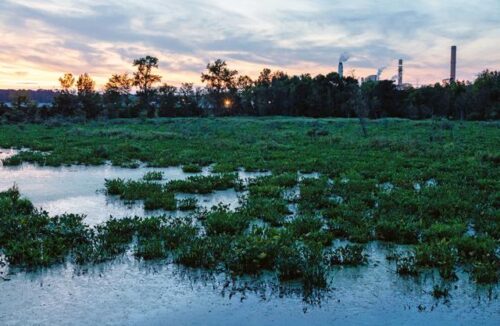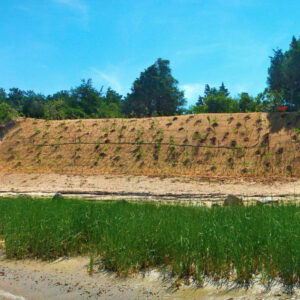
We commend the Bay Journal for publishing the recent opinion piece, Rewilding our streams to save the Chesapeake Bay. This is an important topic that needs more attention, context and recognition as a restoration approach that has become well-established in the Chesapeake watershed.
The major paradigm shift referenced by the author is not new; it’s the result of more than 20 years of continued innovation by restoration practitioners and contractors who have designed and conducted projects to reestablish stream-wetland complexes or “messy streams.”
These practitioners have benefitted greatly from collaboration with academic researchers and cooperation and support from forward-looking landowners and open-minded regulators. The result has been many successful rural and urban stream-wetland restorations, particularly in Maryland and Pennsylvania. Collectively, they show how this approach addresses widespread historic and contemporary impacts created by deforestation, damming, legacy sediment, channelization and floodplain encroachment.
This record of constructed restoration projects has helped lead the effort to promote more ecologically beneficial rewilding approaches. Here we offer several interrelated areas where policy and practice are helping to accelerate this paradigm shift.
First, rewilding approaches have been incentivized by refinements in pollution removal credits for towns and counties that upgrade to separate stormwater/sewer systems (MS4 upgrades, to use the lingo) and for municipal efforts to reduce nonpoint nutrient and sediment runoff into waterways. The state-federal Chesapeake Bay Program and Chesapeake Stormwater Network have facilitated these efforts.
A series of expert panels met in 2019–20 to review, assess and incorporate the latest research and project outcomes to improve the existing stream restoration protocols. The revised guidance encourages ecosystem rehabilitation by emphasizing floodplain reconnection to wetlands, connecting restored floodplain wetlands to groundwater, and retaining and treating sediment and nutrients within the restored stream/wetland complex.
Approximately 15 years of comprehensive research and monitoring by the Pennsylvania Department of Environmental Protection and academic, government and nongovernmental partners on the Big Spring Run project in Lancaster County, PA, were instrumental in advancing these protocols. The research shows that the project is highly effective in reducing sediment output and promoting denitrification, results directly tied to the boost in organic carbon sources within the restored wetland mosaic.
Second, compensatory mitigation for stream, wetland and aquatic resources in the Bay region has been evolving to align with the paradigm shift. The Baltimore District of the U.S. Army Corps of Engineers has recently updated their stream mitigation framework to provide additional credit for multi-threaded channel systems as well as support riparian wetland mitigation within the stream/wetland complex approach.
Also, Pennsylvania’s DEP has recently developed a function-based mitigation model that breaks river systems into land-coverages that focus on the stream and floodplain. The intent is to look beyond the stream channel to promote the long-term health and viability of a full range of ecosystem services with physical, biological and habitat improvements.
The model also incentivizes restoration approaches with higher mitigation credits for projects that remove legacy sediment.
Third, the accelerated pace of dam removal presents a significant opportunity to enhance stream and wetland rewilding.
Traditionally, dam removals were heavily focused on fish passage and public safety with limited consideration of broader attributes. This approach provides less ecosystem benefit and creates policy and practice challenges for achieving local and state water quality mandates. For example, significant public investments in practices designed to reduce sediment and nutrient pollution — such as streamside buffers, cattle fencing, no-till farming practices, and stormwater management — are offset by sediment releases from channel and floodplain erosion following removals that ignore holistic outcomes.
Recognizing this challenge, the Pennsylvania office of the National Resource Conservation Service, DEP and other partners are supporting strategies that address long-term legacy sediment erosion by incorporating comprehensive rewilding approaches. Aligning these goals with sediment reduction crediting for MS4 and bay cleanup purposes will further encourage dam removals that promote enhanced holistic ecological and water quality outcomes.
Decades of scientific research and project implementation have been key contributors to the rewilding approach in the Bay watershed. But in the past, projects that focused on removing legacy sediment to reestablish buried wetland ecosystems were criticized as “bulldozing streams,” “valley dredging” or “engineered.” Similarly, dam removal was largely a “blow and go” practice that discounted related environmental consequences and opportunities.
Future success in the watershed will require continuing education and engagement by the environmental community and public because research suggests that the riparian system of the Bay watershed prior to 1600 was likely not dominated by large, free-flowing channels lined with hardwood forests and elevated floodplains. Consequently, prioritizing funding and policies to preserve or construct such systems limits ecological and water quality benefits and reduces public confidence that tax dollars are being spent wisely.
While sharp differences of opinion still exist at the margins regarding the effectiveness of specific best practices and the temporary impacts required to achieve holistic restoration, a shift is clearly taking place. Today, most conservation and restoration professionals recognize that a “one size fits all” approach is neither practical nor effective for the Bay’s recovery. Highly altered riparian zones filled with legacy sediment created by centuries of anthropogenic impacts have less capacity to treat and clean the waters delivered to the Bay.
If we truly want to “save the Bay,” then simply “checking the box” for best management practices is unlikely to yield the desired outcomes until we recognize the full potential of rewilding our riparian systems.
Joseph Sweeney is the executive director of the Water Science Institute. Drew Altland is a director of ecological engineering for Ecotone, LLC. Both live in Lancaster County, PA.
Published: BayJournal


